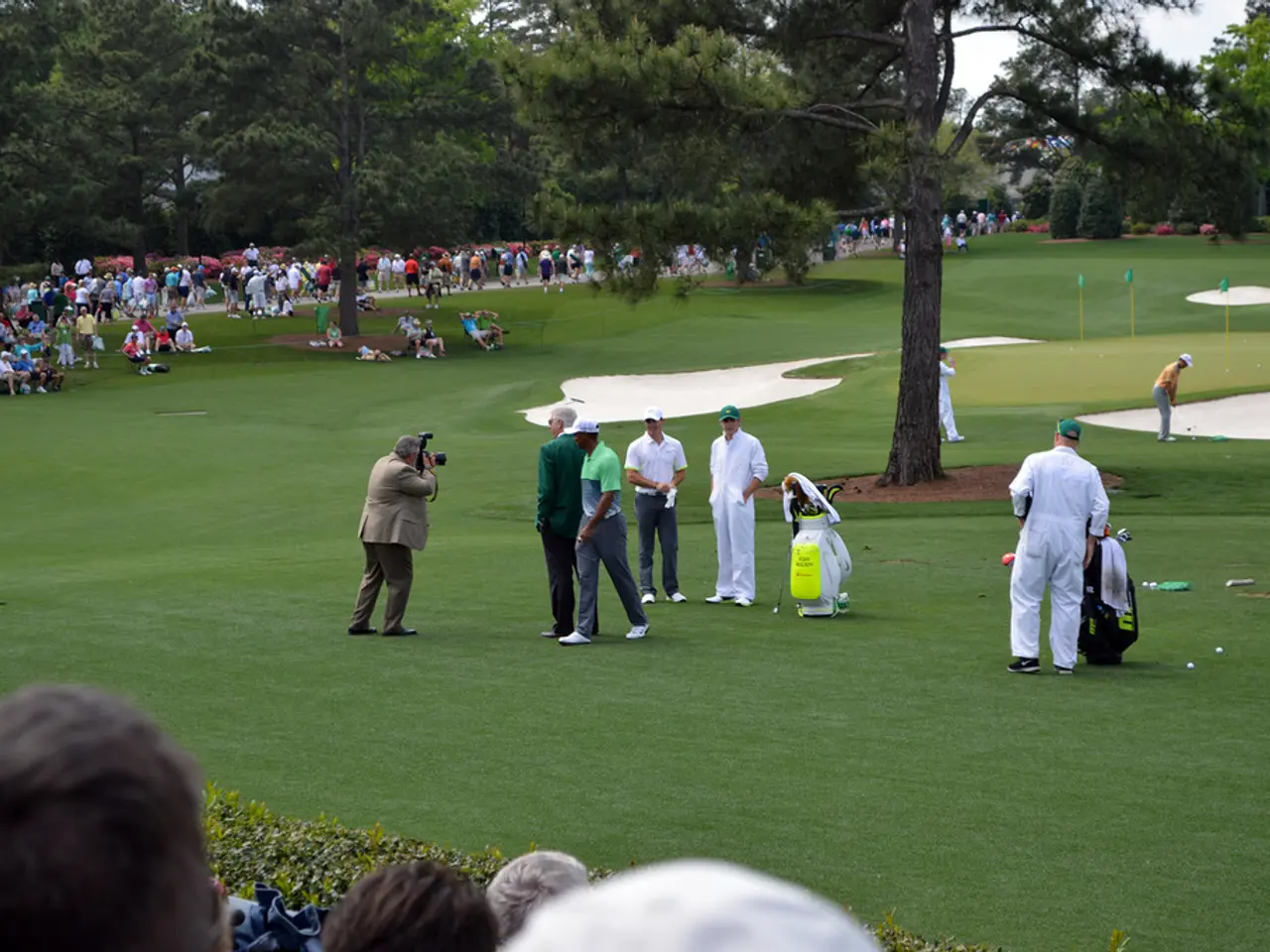Trump's Mastery in Bargaining Techniques
Under President Trump's administration, the US implemented a series of reciprocal tariff measures, raising certain EU product tariffs to 15% as part of an ongoing trade negotiation dynamic [2][3][5]. This move was aimed at establishing "balanced trade" by increasing tariffs on EU goods.
The EU, having prepared for the negotiations for months, consented to some restrictions and agreed to substantial investment and energy purchase commitments as part of a broader deal to mitigate full-scale trade retaliation [1][2]. In a strategic move, the EU chose not to impose retaliatory tariffs on US goods, thus avoiding a trade war and accepting a somewhat asymmetric arrangement.
The cost of these tariffs primarily falls on US importers and consumers who pay higher prices for EU goods, with EU exporters possibly sharing some cost impact via competitive pressures [1][2]. The negotiations, which took place at Trump's golf club in Scotland, culminated in a final group photo, reminiscent of Asterix, where all participants (except for Sabine Weyand) smiled and gave a thumbs up [6].
However, the stock market may not favour such trade practices, as suggested by LVMH's chart [4]. If a company adds the tariff to the price, sales may decrease. If it keeps the price constant, it directly affects the profit. Notably, Howard Lutnick and President Donald Trump were involved in the negotiations [7].
It remains unclear whether Mrs. von der Leyen, the EU's Director-General for Trade, has read Donald Trump's book, "The Art of the Deal" [5]. The publication of this book dates back to 1987 [8]. The US President has also threatened to impose tariffs of 35% if the EU fails to honor the promised investments of $600 billion [9]. However, these threats were later reduced to a range between 10 and 15% [2].
The trade pact includes 15% tariffs on EU exports to the US and no tariffs from the US to Europe [1]. The weak dollar does not help in this situation, as it makes US goods less expensive for EU consumers and increases the cost of EU exports to the US [10]. The EU is currently perceived as economically insignificant in the eyes of the USA [11].
The EU's decision to agree to investment and energy purchase commitments in the trade negotiation was a strategic move to avoid imposing retaliatory tariffs on US goods, thereby preventing a potential trade war. The trade pact, which includes 15% tariffs on EU exports to the US and no tariffs from the US to Europe, has had cost implications on US importers and consumers, who now pay higher prices for EU goods, while EU exporters face competitive pressures.




